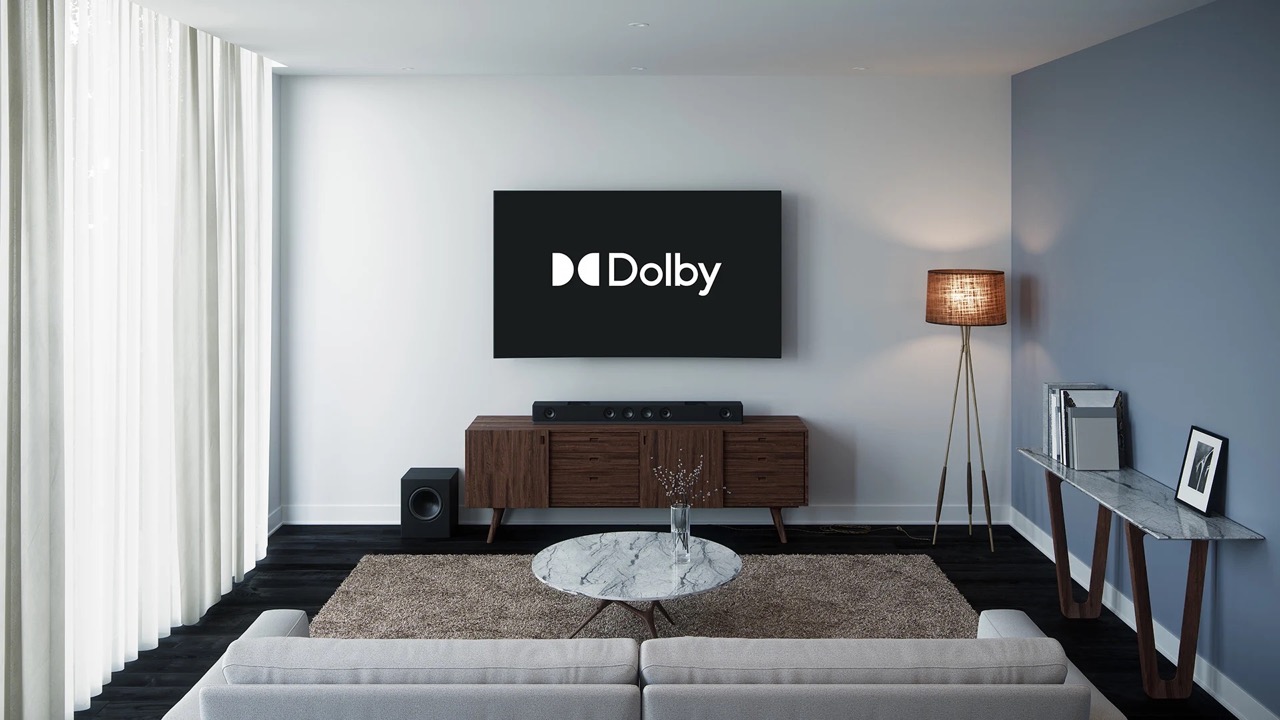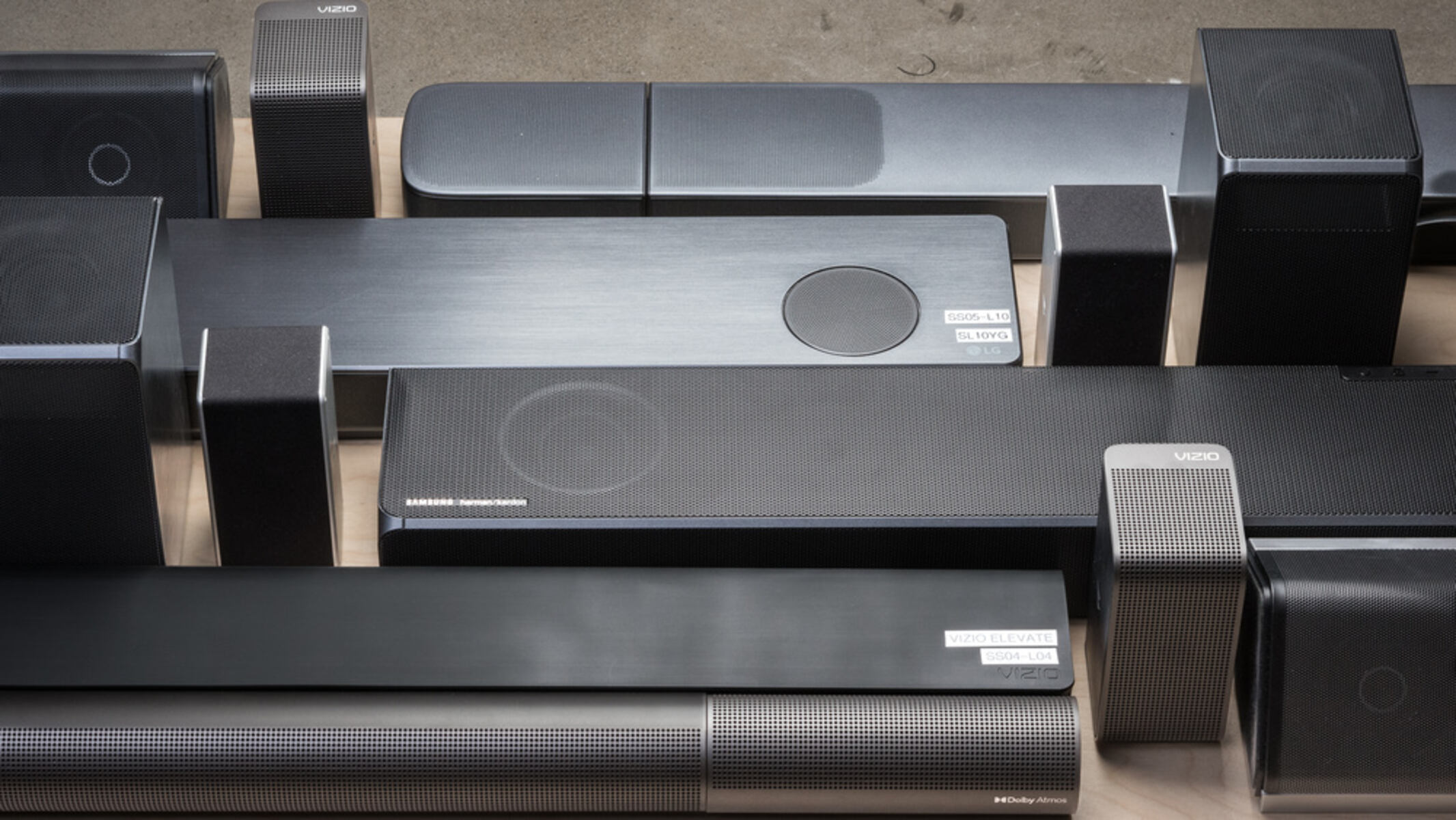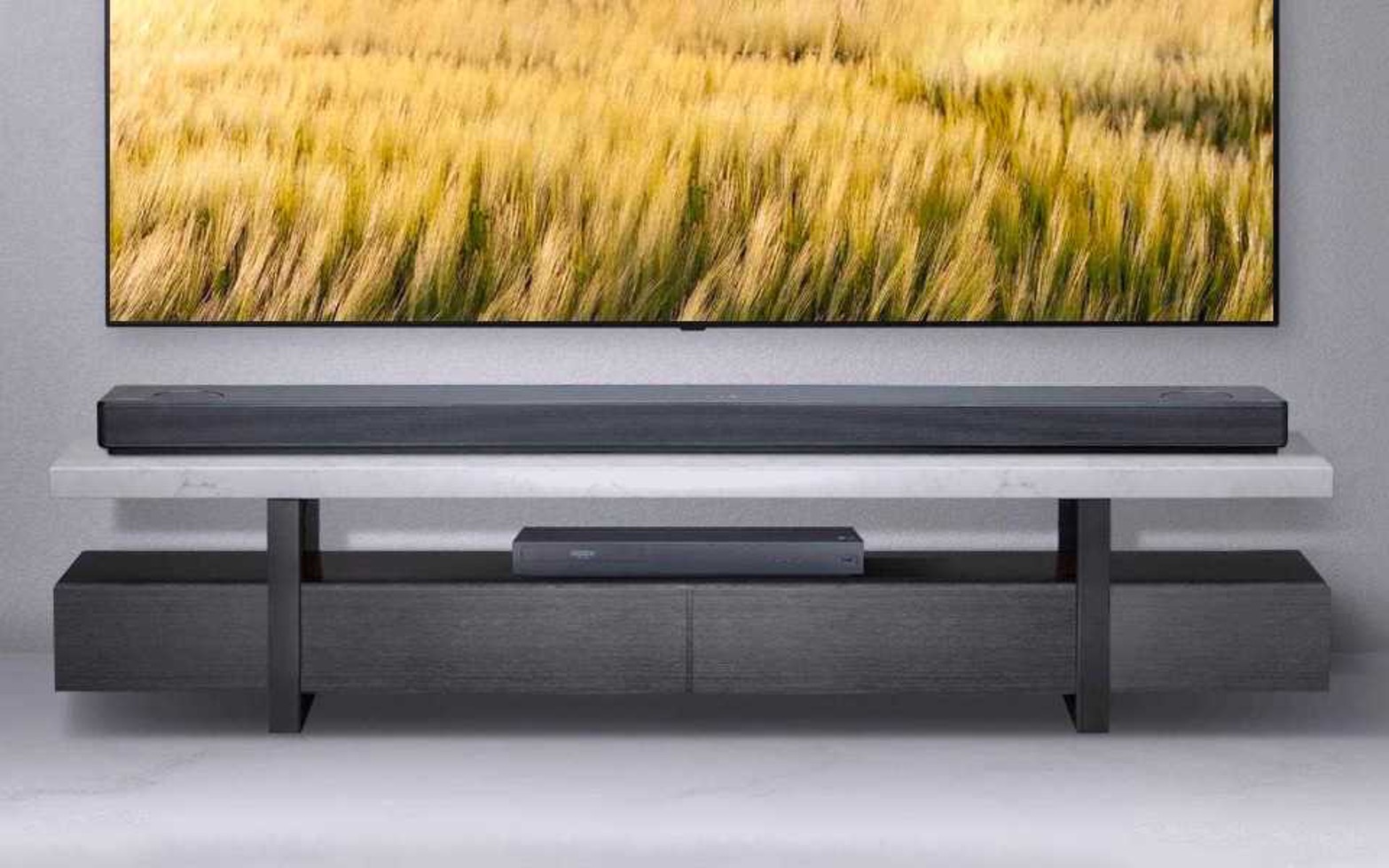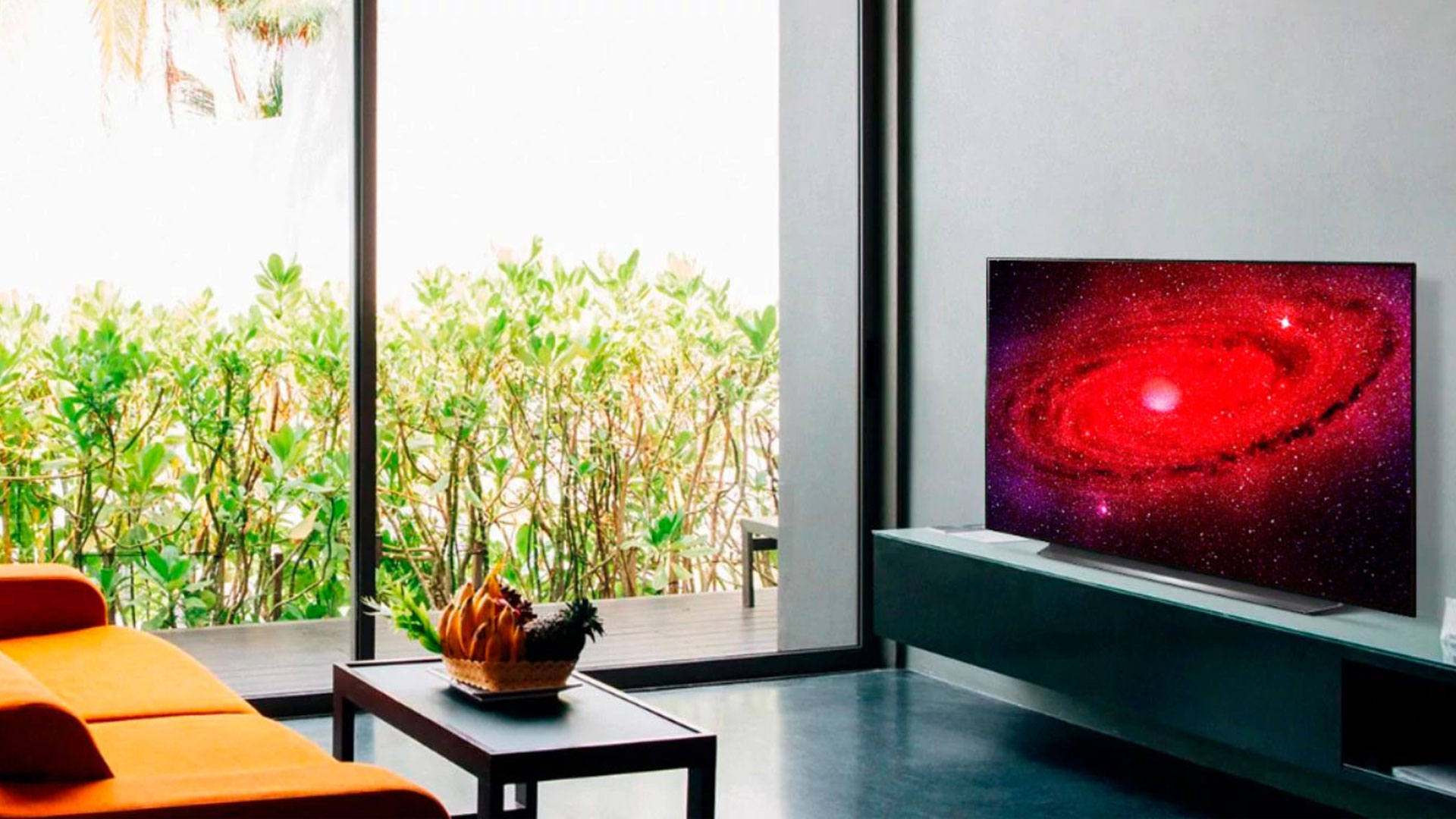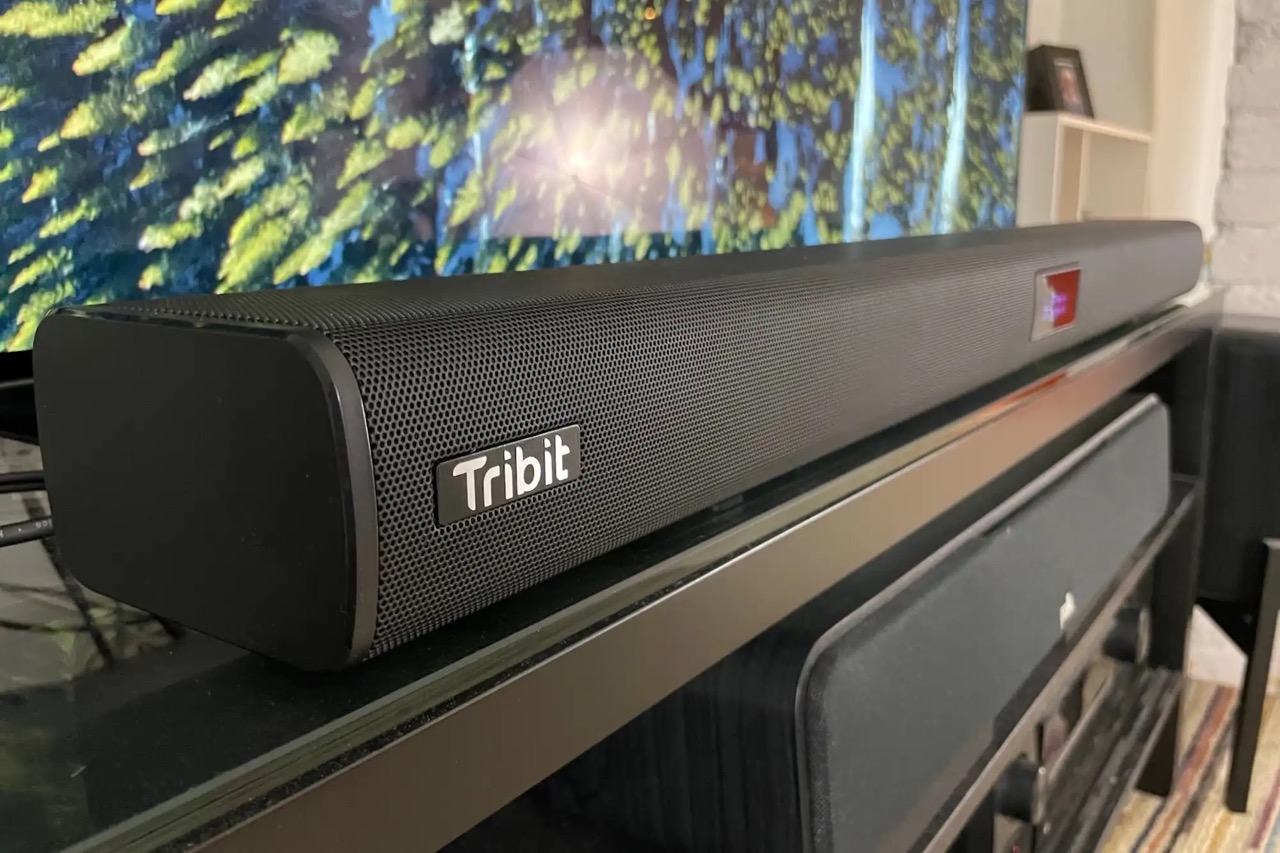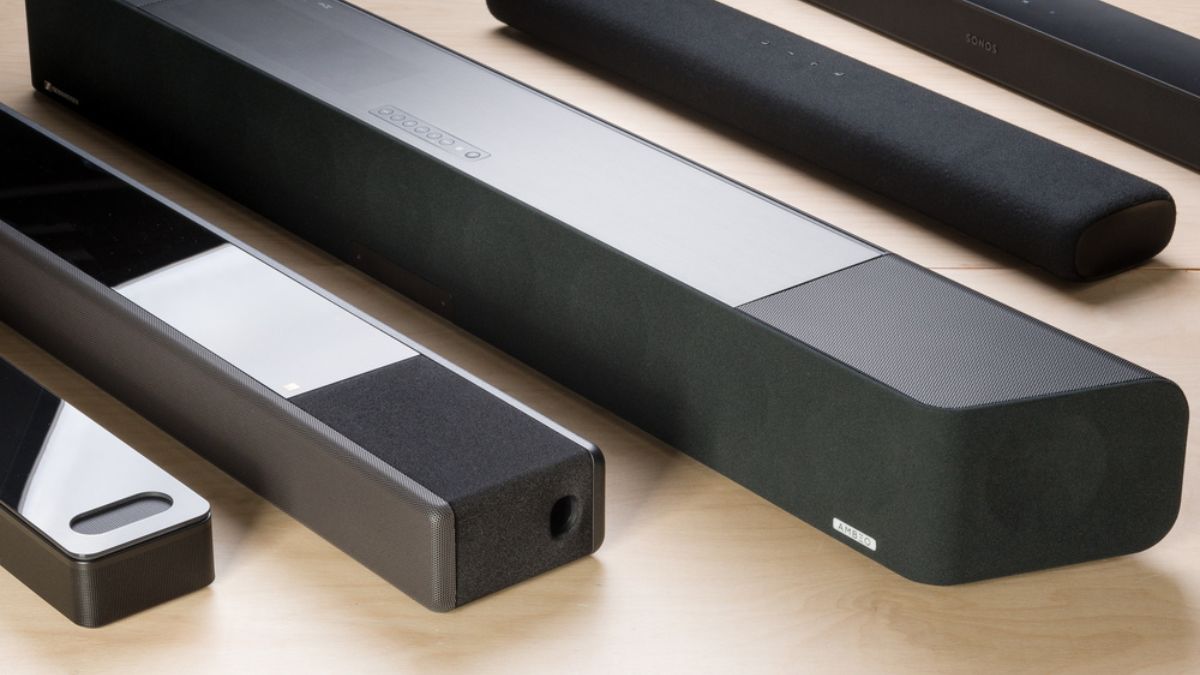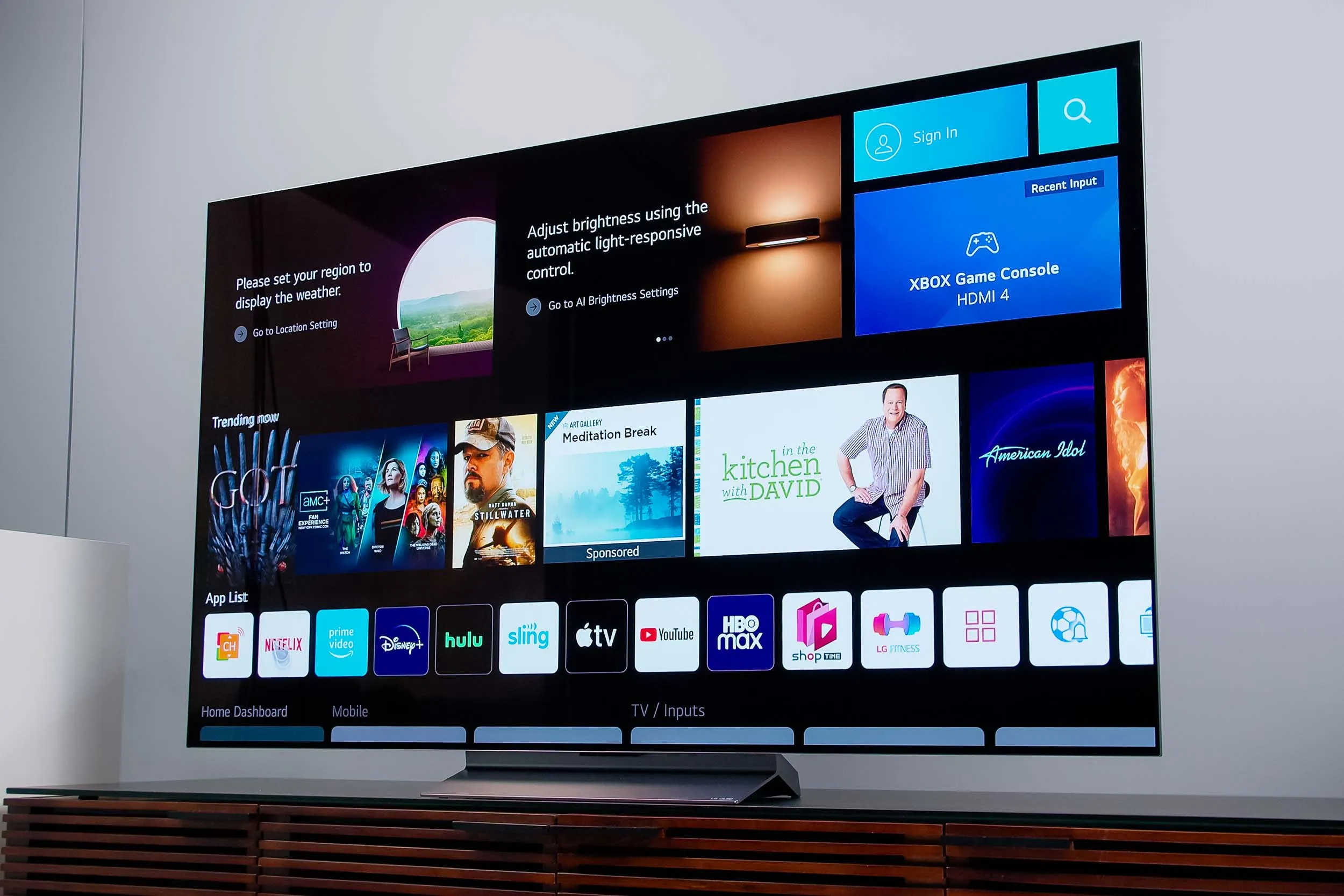Introduction
Welcome to the world of Dolby Atmos soundbars! If you’re a fan of immersive audio experiences, then you’re in for a treat. Dolby Atmos takes traditional surround sound to a whole new level, creating a three-dimensional audio environment that transports you right into the heart of the action. Whether you’re watching movies, playing games, or listening to music, Dolby Atmos soundbars offer an unparalleled audio experience that will elevate your home entertainment setup.
So, what exactly is Dolby Atmos? In simple terms, Dolby Atmos is an audio format that allows sound to be placed and moved in three-dimensional space, giving you a sense of height and depth. It’s like having a theater-quality sound system right in your living room. Instead of being limited to traditional surround sound channels, Dolby Atmos soundbars use object-based audio to precisely place sound effects and vocals in your room, creating a truly immersive experience.
One of the biggest advantages of using a Dolby Atmos soundbar is the ability to have a cinematic audio experience without the need for additional speakers or complicated installation. Traditional surround sound systems require multiple speakers placed strategically around the room, which can be a hassle to set up and can clutter your space. With a Dolby Atmos soundbar, you can achieve a similar, if not better, audio experience with just a single device.
Another benefit of Dolby Atmos soundbars is their compatibility with various forms of media. Whether you’re watching a blockbuster movie in Blu-ray, streaming content from your favorite online platform, or playing games on your console, Dolby Atmos soundbars can enhance the audio in a way that adds depth and realism to your entertainment. It’s like having a personal home theater system at your disposal.
Now that you have a glimpse into the exciting world of Dolby Atmos soundbars, let’s dive deeper into the compatibility requirements and how to set up and optimize your soundbar for the best audio experience. Get ready to take your home entertainment to new heights!
What is Dolby Atmos?
Dolby Atmos is a revolutionary audio technology that takes traditional surround sound to the next level. Unlike traditional surround sound setups that use channels to distribute audio, Dolby Atmos employs object-based audio to create a three-dimensional sound experience. This means that instead of being limited to specific speakers, sound can be precisely placed and moved in a three-dimensional space, resulting in a more immersive and lifelike audio experience.
To understand how Dolby Atmos works, imagine watching a scene in a movie where a helicopter is flying overhead. With traditional surround sound, you would hear the helicopter’s sound coming from the front or rear speakers, creating a sense of movement from one speaker to another. However, with Dolby Atmos, you would hear the helicopter’s sound moving seamlessly above you, creating a realistic and immersive sensation of being in the middle of the action.
What sets Dolby Atmos apart is its use of overhead speakers or up-firing speakers to create a sense of height in the audio. By incorporating these speakers, Dolby Atmos can reproduce sound effects that seem to come from above, adding a new dimension to the audio experience. This vertical element adds depth and realism to movies, games, and music, making you feel like you’re truly part of the sound environment.
Dolby Atmos is not limited to movie theaters; it has become increasingly accessible for home use through soundbars and other audio devices. Soundbars equipped with Dolby Atmos technology use advanced algorithms to simulate the immersive audio experience of multiple speakers in a compact and convenient form. With a Dolby Atmos soundbar, you can enjoy the benefits of this cutting-edge audio technology without the need for additional speakers or complex installation.
It’s important to note that while Dolby Atmos can certainly enhance the audio experience, not all content is created with Dolby Atmos in mind. To fully appreciate the immersive audio capabilities of Dolby Atmos, it’s recommended to consume content that explicitly supports this audio format. Many movies, TV shows, and video games are now released with Dolby Atmos tracks, which can be enjoyed to their fullest potential when paired with a Dolby Atmos soundbar.
Now that you have a better understanding of what Dolby Atmos is and how it enhances the audio experience, let’s explore the benefits of using Dolby Atmos soundbars in your home entertainment setup.
The Benefits of Dolby Atmos Soundbars
Dolby Atmos soundbars offer a multitude of benefits that can greatly enhance your audio experience. Here are some key advantages of incorporating a Dolby Atmos soundbar into your home entertainment setup:
1. Immersive Audio Experience: The most significant benefit of Dolby Atmos soundbars is the immersive audio experience they provide. By using object-based audio and overhead speakers, Dolby Atmos soundbars create a three-dimensional sound environment that surrounds you from all angles. This allows you to feel fully immersed in the action, whether you’re watching movies, playing games, or listening to music.
2. Simplicity and Convenience: Dolby Atmos soundbars offer a simplified and convenient setup compared to traditional surround sound systems. With just a single soundbar, you can achieve a similar, if not better, audio experience without the need for multiple speakers placed strategically around the room. This eliminates the hassle of running wires and ensures a neat and clutter-free setup.
3. Space-Saving Design: Dolby Atmos soundbars are designed to be sleek and compact, making them ideal for smaller living spaces or rooms where installing a full surround sound system is impractical. Their slim profile allows for easy placement in front of or below your TV, saving valuable space without compromising on audio quality.
4. Compatibility: Dolby Atmos soundbars are compatible with various forms of media, including Blu-ray discs, streaming services, and gaming consoles. Many movies and TV shows are now released with Dolby Atmos audio tracks, providing an extensive library of content to enjoy with your soundbar. Gaming experiences are also enhanced, with Dolby Atmos soundbars delivering precise audio cues that can immerse you deeper in virtual worlds.
5. Enhanced Dialog and Clarity: Dolby Atmos soundbars are designed to provide clear and intelligible dialog. With advanced sound processing algorithms, they can isolate vocals and enhance them, ensuring that dialog is crisp and easy to understand even in action-packed scenes or dialogue-heavy movies.
6. Expandability: Dolby Atmos soundbars offer the flexibility to expand your audio setup if desired. Some soundbars come with additional wireless surround speakers or subwoofers that can be added to create a more comprehensive audio system. This allows you to tailor the setup to your preferences and room size.
With their immersive audio capabilities, simplicity, and compatibility with various media formats, Dolby Atmos soundbars are a fantastic addition to any home entertainment setup. Now that you understand the benefits, let’s explore the compatibility requirements for Dolby Atmos soundbars.
Compatibility Requirements for Dolby Atmos Soundbars
Before purchasing a Dolby Atmos soundbar, it’s essential to ensure that your setup meets the necessary compatibility requirements. Here are the key factors to consider:
1. Content Sources: To fully enjoy the Dolby Atmos experience, you need access to content that supports Dolby Atmos audio. This includes movies, TV shows, and games that have been specifically mixed and encoded in Dolby Atmos. Streaming services such as Netflix, Disney+, and Amazon Prime Video offer a growing library of Dolby Atmos content, while Blu-ray discs and select gaming titles also provide Dolby Atmos support.
2. HDMI ARC or eARC: Most Dolby Atmos soundbars require a TV with HDMI ARC (Audio Return Channel) or the newer enhanced Audio Return Channel (eARC) capability. These features allow audio to be sent from the TV to the soundbar over a single HDMI cable, simplifying the setup and ensuring compatibility with Dolby Atmos audio formats.
3. HDMI Inputs: In addition to HDMI ARC or eARC, your soundbar should have sufficient HDMI inputs to connect your other devices, such as Blu-ray players, gaming consoles, or set-top boxes. Ensure that the soundbar has at least one HDMI input with support for HDMI 2.0 or higher to handle the bandwidth required for Dolby Atmos audio signals.
4. Dolby Atmos Passthrough: Verify that your TV and soundbar support Dolby Atmos passthrough. This means the TV can receive Dolby Atmos signals from external sources, such as a gaming console or a Blu-ray player, and pass it through to your soundbar for decoding and playback. Without Dolby Atmos passthrough support, you may not be able to fully enjoy the immersive audio experience.
5. Room Size and Layout: The size and layout of your room can also affect the effectiveness of a Dolby Atmos soundbar. For optimal results, a room with a flat ceiling and minimal obstructions is preferable. While soundbars do their best to simulate height channels, the audio experience can be enhanced in rooms with the appropriate conditions for sound reflection and dispersion.
6. Internet Connectivity: Some Dolby Atmos soundbars may require an internet connection for firmware updates and access to streaming services that offer Dolby Atmos content. Ensure that your soundbar can connect to your Wi-Fi network if this is a requirement for the specific model you choose.
It’s important to carefully review the compatibility requirements of both the soundbar and your existing setup to ensure a seamless integration and optimal performance. With the right configuration, you can fully enjoy the immersive audio experience that Dolby Atmos soundbars offer.
Now that you’re aware of the compatibility requirements, let’s move on to setting up your Dolby Atmos soundbar.
Setting Up a Dolby Atmos Soundbar
Setting up a Dolby Atmos soundbar is straightforward and can be done by following a few simple steps. Here’s a guide to help you get your Dolby Atmos soundbar up and running:
1. Placement: Start by finding an ideal location for your soundbar. It should be placed in front of or below your TV, preferably centered for optimal sound distribution. Make sure there are no obstructions blocking the soundbar and that it is positioned at ear level for the best audio experience.
2. Connections: Connect one end of an HDMI cable to the HDMI ARC or eARC port on your TV and the other end to the HDMI ARC or eARC port on the soundbar. This allows audio to be routed from the TV to the soundbar. If your TV doesn’t have HDMI ARC or eARC, you can use an optical cable as an alternative connection method.
3. Power Up: Plug in the power cable of the soundbar and ensure it’s connected to a power source. Turn on the soundbar and your TV. You should see a confirmation on your TV screen indicating that the soundbar has been detected.
4. Source Selection: Use the remote control that comes with your soundbar to select the appropriate input source. This could be the HDMI input that is connected to your TV or any other connected external devices such as a Blu-ray player or gaming console.
5. Soundbar Settings: Access the settings menu on your soundbar using the remote control or the control panel on the device itself. Navigate to the audio settings and ensure that Dolby Atmos is enabled. You may also need to adjust other settings such as speaker levels, equalizer settings, or audio modes based on your preference for the best sound quality.
6. Audio Formats: Set your TV’s audio output settings to pass through Dolby Atmos or bitstream, depending on your TV’s options. This ensures that the audio signal is transmitted to the soundbar for proper decoding and playback of Dolby Atmos content.
7. Test and Enjoy: Play Dolby Atmos content from a supported source, such as a Blu-ray disc or a streaming service, to test the audio performance of your soundbar. Listen to the sound effects and the spatial positioning of audio elements to confirm that the Dolby Atmos feature is functioning correctly.
Remember to consult the user manual provided with your specific soundbar model for detailed instructions and any specific setup requirements that may apply.
Now that your Dolby Atmos soundbar is set up and ready to go, the next step is to connect your devices and adjust the sound settings for the best Dolby Atmos experience. Let’s explore that in the next sections.
How to Connect Your Devices to a Dolby Atmos Soundbar
Connecting your devices to a Dolby Atmos soundbar is a crucial step in ensuring that you can enjoy the immersive audio experience across all your media sources. Here’s a step-by-step guide on how to connect your devices to a Dolby Atmos soundbar:
1. HDMI Connections: The preferred method for connecting your devices to a Dolby Atmos soundbar is through HDMI. Check if your soundbar has multiple HDMI inputs available. Connect your devices, such as a Blu-ray player, gaming console, or streaming device, to the available HDMI inputs on the soundbar.
2. HDMI ARC or eARC: To simplify the connection between your TV and soundbar, it’s recommended to utilize the HDMI ARC or eARC feature. Connect one end of an HDMI cable to the HDMI ARC or eARC port on your TV and the other end to the HDMI ARC or eARC port on the soundbar. This allows for audio to be transmitted from the TV to the soundbar.
3. Optical Connection: If your TV does not support HDMI ARC or eARC, you can opt for an optical cable connection. Connect one end of an optical cable to the optical output on your TV and the other end to the optical input on the soundbar. Keep in mind that optical connections may not support lossless audio formats, so HDMI is preferred when possible.
4. Set Your Device Output: Access the settings menu on your devices, such as the Blu-ray player or gaming console, and ensure that the audio output is set to HDMI or optical (depending on the connection used) to route the audio through the soundbar. It’s crucial to select the appropriate audio format, such as Dolby Atmos, if available, for the best audio experience.
5. TV Audio Output Settings: Adjust the audio output settings on your TV to ensure proper audio transmission to the soundbar. Set the audio output to HDMI ARC or optical (based on the connection used), and if available, select the appropriate audio format, including Dolby Atmos or bitstream. These settings allow the TV to pass through the audio signal to the soundbar for proper decoding and playback.
6. Test the Connections: Once you’ve connected your devices and set the audio output settings, play audio from your various sources and verify that the sound is coming through the Dolby Atmos soundbar. Listen for the distinct audio positioning and height cues that Dolby Atmos provides to ensure that the connections are working correctly.
Remember to consult the user manual of your specific devices and soundbar for any specific instructions or settings related to audio output and connection options.
Now that your devices are connected to the Dolby Atmos soundbar, it’s crucial to adjust the sound settings to optimize your Dolby Atmos experience. Let’s explore how to adjust the sound settings in the next section.
Adjusting the Sound Settings for Dolby Atmos
To fully optimize your Dolby Atmos soundbar and ensure the best audio experience, it’s essential to adjust the sound settings according to your preferences and room conditions. Here are some key aspects to consider when adjusting the sound settings for Dolby Atmos:
1. Speaker Levels: Most Dolby Atmos soundbars allow you to adjust the levels of different speakers to achieve a balanced audio output. Use the soundbar’s settings menu or remote control to increase or decrease the levels of the front, surround, and overhead speakers. Fine-tune these levels to suit your listening position and ensure that the audio is well-balanced across all channels.
2. Equalizer Settings: Explore the equalizer settings on your soundbar to tailor the audio output based on your preferences and the content you’re consuming. You can adjust the bass, treble, and overall sound profile to enhance specific frequencies or create a more immersive experience. Experiment with different settings to find the right balance for your liking.
3. Audio Modes: Many Dolby Atmos soundbars offer different audio modes designed specifically for movies, music, or gaming. These modes adjust the sound settings to optimize the audio output for different types of content. Explore the available audio modes on your soundbar and select the one that best suits your current activity or genre of media you’re enjoying.
4. DRC (Dynamic Range Control): Dolby Atmos soundbars often come equipped with a Dynamic Range Control feature that allows you to adjust the difference between the loudest and softest sounds. If you find that certain content has overly loud or soft passages, you can utilize the DRC settings to compress the dynamic range and ensure consistent volume levels throughout your audio experience.
5. Dialogue Enhancements: Some soundbars offer specific features to enhance dialogue clarity, ensuring that spoken words are crisp and easily discernible. Enable any dialogue enhancement settings available on your soundbar to improve the intelligibility of dialogues, particularly in movies or TV shows where clarity of speech is essential.
6. Room Correction: Some advanced Dolby Atmos soundbars have room correction features that can optimize the audio output based on the characteristics of your listening environment. These systems analyze the room’s acoustics and adjust the soundbar’s settings accordingly to compensate for any audio reflections or resonances. Consult your soundbar’s user manual for instructions on how to perform room correction if this feature is available.
Remember, personal preferences and room acoustics can vary, so take the time to experiment with different settings and find the configuration that delivers the most satisfying audio experience for you.
Now that you’ve adjusted the sound settings for your Dolby Atmos soundbar, it’s time to explore how you can optimize your room to further enhance your Dolby Atmos audio experience.
Optimizing Your Room for Dolby Atmos
To truly maximize the potential of your Dolby Atmos soundbar, it’s important to optimize your listening environment. Here are some tips to help you create an optimal room setup for Dolby Atmos:
1. Ceiling: Dolby Atmos relies on overhead speakers or up-firing speakers to create a sense of height in the audio. If possible, ensure that your room has a flat ceiling without any obstructions that could interfere with the sound reflections. A smooth and reflective ceiling surface can help to distribute the overhead audio effects effectively.
2. Speaker Placement: If you have the option to add additional speakers for a more comprehensive Dolby Atmos setup, follow the guidelines provided by the soundbar manufacturer for speaker placement. The positioning of the additional speakers should conform to the recommended angles and heights to achieve the desired immersive audio experience.
3. Room Acoustics: The acoustic properties of the room can affect the overall audio quality. Consider using acoustic treatments, such as curtains, rugs, or sound-absorbing panels, to reduce unwanted echoes, reverberations, and reflections. These measures can help improve the clarity and precision of the sound, ensuring that the Dolby Atmos effects are delivered as intended.
4. Seating Position: Position your seating area in the sweet spot of the room to maximize the immersive audio experience. Ideally, the seating position should be centered between the front, surround, and overhead speakers. Experiment with different seating arrangements to find the best spot where the audio effects are most pronounced.
5. Furniture Placement: Avoid placing large furniture or objects between the soundbar and the listening area, as they can obstruct the sound waves and affect the audio performance. Optimize the arrangement of furniture and décor to ensure clear paths for the audio to travel and reach your ears unobstructed.
6. Calibration and Setup: Follow the calibration and setup instructions provided by the soundbar manufacturer to ensure proper configuration and alignment of the speakers. Many Dolby Atmos soundbars come with automated calibration systems that analyze the room’s acoustics and adjust the audio settings accordingly. Take advantage of these features to optimize the sound output for your specific room environment.
7. Room Size: Keep in mind that the size of your room can affect the effectiveness of the Dolby Atmos audio experience. While soundbars aim to simulate height channels, larger rooms may not offer the same level of immersion as smaller, enclosed spaces. However, with proper placement and optimization, you can still achieve a satisfying Dolby Atmos experience in larger rooms.
By taking these optimization steps, you can create an optimal listening environment and fully enjoy the immersive audio experience that Dolby Atmos offers.
Now that you’ve optimized your room for Dolby Atmos, it’s time to address any potential issues or troubleshooting that you may encounter with your Dolby Atmos soundbar.
Troubleshooting Common Issues with Dolby Atmos Soundbars
While Dolby Atmos soundbars can provide an exceptional audio experience, there may be instances when you encounter issues that require troubleshooting. Here are some common problems you may encounter with Dolby Atmos soundbars and their possible solutions:
1. No Sound or Audio Issues: If you’re not hearing any sound or experiencing audio problems, start by checking the connections between your soundbar and devices. Ensure that all cables are securely plugged in and that the correct input source is selected on the soundbar. Also, verify that the device’s audio settings are correctly configured to pass audio through to the soundbar.
2. Audio Delay: If you notice a delay between the video and audio when watching content, it may be due to the processing time required for the Dolby Atmos soundbar. Check if your soundbar has an audio delay adjustment feature, as you may need to adjust this setting to synchronize the audio with the visuals on the screen.
3. Unresponsive Remote Control: If your soundbar’s remote control becomes unresponsive, try replacing the batteries or ensuring that there are no obstructions between the remote and the soundbar. If the issue persists, refer to the soundbar’s user manual for instructions on how to re-sync the remote control.
4. Compatibility Issues: In some cases, you may encounter compatibility issues with certain devices or content sources. Make sure that your soundbar’s firmware is up to date, as manufacturers often release updates to address compatibility issues. Additionally, check if the device or content source you’re using supports Dolby Atmos and verify that it is configured correctly to send the Dolby Atmos audio signal to the soundbar.
5. Audio Dropouts or Intermittent Sound: If you experience audio dropouts or intermittent sound, check the connectivity between your soundbar and devices. Ensure that the cables are securely connected, and there are no loose connections. Additionally, consider adjusting the audio settings on the soundbar, such as speaker levels or equalizer settings, as imbalanced or improper settings can lead to audio inconsistencies.
6. Firmware Updates: Regularly check for firmware updates for your Dolby Atmos soundbar. Manufacturers often release firmware updates to address performance issues, add new features, or improve compatibility. Consult the user manual or the manufacturer’s website for instructions on how to update the firmware of your soundbar.
7. Poor Audio Quality: If you’re experiencing poor audio quality, ensure that the audio settings on your soundbar are appropriately configured. Adjust the speaker levels, equalizer settings, and other sound enhancement features to optimize the audio output. Additionally, consider the acoustics of your room and make necessary adjustments, such as adding acoustic treatments or repositioning the soundbar and seating area, to improve the audio quality.
If you encounter issues that persist despite troubleshooting attempts, it’s recommended to reach out to the manufacturer’s customer support for further assistance. They can provide specific guidance based on your soundbar model and help resolve any persistent issues you may be facing.
Now that you’re equipped with troubleshooting knowledge, you can address any issues that arise and enjoy a seamless Dolby Atmos soundbar experience.
Conclusion
In conclusion, Dolby Atmos soundbars offer a truly immersive audio experience that can elevate your home entertainment setup. By utilizing object-based audio and overhead speakers, Dolby Atmos soundbars create a three-dimensional sound environment that surrounds you, bringing movies, games, and music to life like never before. With their simplicity, convenience, and compatibility with various media sources, Dolby Atmos soundbars provide a convenient alternative to traditional surround sound systems.
We explored the benefits of Dolby Atmos soundbars, including their ability to provide an immersive audio experience, their space-saving design, and their compatibility with different content sources. We also discussed the compatibility requirements for Dolby Atmos soundbars, including the need for content that supports Dolby Atmos audio and HDMI ARC or eARC compatibility.
Setting up a Dolby Atmos soundbar involves proper placement, connections, and adjustments to sound settings. We covered the step-by-step process of connecting your devices to a Dolby Atmos soundbar using HDMI or optical connections, ensuring proper audio output settings for devices and TV, and adjusting sound settings such as speaker levels and equalizer settings. We also discussed optimizing your room for Dolby Atmos, including considerations for ceiling, speaker placement, room acoustics, seating position, and furniture placement.
In troubleshooting common issues with Dolby Atmos soundbars, we provided solutions for issues such as no sound or audio problems, audio delay, unresponsive remote control, compatibility issues, audio dropouts, firmware updates, and poor audio quality. By following these troubleshooting steps and reaching out to the manufacturer’s support when necessary, you can resolve common issues and ensure a seamless audio experience.
With the right setup, adjustment of sound settings, and consideration of room conditions, you can fully enjoy the immersive audio experience that Dolby Atmos soundbars offer. Whether you’re watching movies, playing games, or listening to music, a Dolby Atmos soundbar can transport you into a world of extraordinary sound.
Explore the possibilities of Dolby Atmos soundbars and elevate your home entertainment to new heights. Immerse yourself in the rich audio experience, feel the depth and detail of the sound, and bring your favorite content to life like never before.







